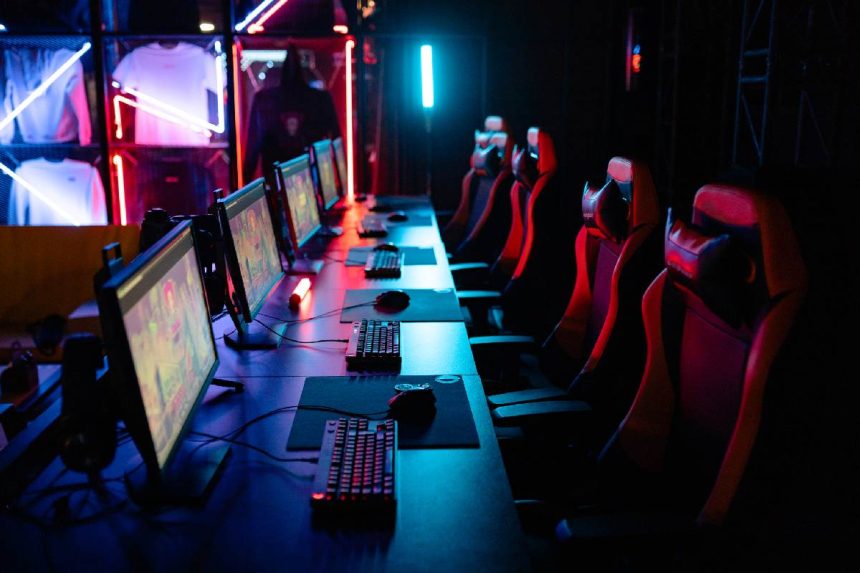Esports is one of the fastest-growing industries in the world today, with millions of viewers tuning in to watch professional gamers compete in some of the most popular video games today. Behind this incredible success story lies a vast array of technology that powers eSports and enables players and fans alike to enjoy the experience.
Esports has become so popular today that sources like unikrn, for instance, offer fans an opportunity to wager on the outcomes of matches, leagues and even tournaments. To make all of this possible, to begin with, state-of-the-art hardware, software and network solutions are utilized to their full potential.
To an average onlooker, it all looks pretty flashy and exciting. However, behind the scenes, an army of tech workers, logistics experts and support staff are making sure that the competition and its worldwide broadcast are operating as efficiently and seamlessly as possible. So with that in mind, let’s have a closer look at the technology powering eSports today.
How dedicated eSports hardware is enhancing professional gaming performance
Professional gaming has become a highly competitive industry, with players striving to gain an edge over their opponents in every way possible. To do this, many are turning to dedicated eSports hardware specifically designed for gaming.
This hardware includes specialized keyboards and other periphery that offer faster response times and more precise control than standard models. Moreover, some of these devices feature customizable buttons and macros that allow gamers to quickly access specific commands or functions without having to do so manually. Other pieces of dedicated eSports hardware include headsets with noise-cancelling technology, which can help reduce distractions during intense gaming sessions.
Finally, specialized monitors are available on the market that provides higher refresh rates and better colour accuracy than traditional displays. Of course, the periphery doesn’t mean much without cutting-edge hardware that powers eSports PCs and enables gamers to achieve their full potential when competing against each other.
The impact of cloud computing on today’s competitive video gaming scene
Cloud computing has had a major impact on the competitive video gaming scene. Cloud-based gaming services allow gamers to access high-end games without investing in expensive hardware or software.
This means that more people can participate in competitive gaming and practice doing so, as they don’t need to worry about the cost of purchasing and maintaining powerful computers. Such technology has paved the way for future superstars to rise to the occasion.
The fact that you don’t need a high-end machine to play the latest games means that you can solely focus on honing your skills and getting scouted for one of the many eSports teams that are always on the lookout for fresh, new and talented players.
Cloud computing leverages the power of virtualization, meaning any number of resources can be poured into the virtual machines. This type of approach is often used in eSports as it reduces the necessity for bulky hardware and tons of wiring in the championship arenas.
Analyzing high-speed networking solutions for professional gamers
Professional gamers require high-speed networking solutions to ensure their gaming experience is as smooth and lag-free as possible. To analyze the best networking solutions for professional gamers, it’s important to consider factors such as latency, bandwidth and connection stability.
Latency is the amount of time it takes for data to travel from one point to another on a network. Low latency is essential for professional gamers because it reduces lag and allows them to react quickly in real-time games.
Bandwidth measures how much data can be transferred over a network at any given time. Professional gamers need networks with high bandwidth to quickly transfer large amounts of data without experiencing slowdowns or interruptions in their gameplay.
That’s why connection stability plays an essential role in the eSports environment. It ensures that the network is closed to outside factors and access so that it can remain stable and allow gamers to do their thing without interruptions.
Evaluating the latest developments in eSports broadcasting technologies
When evaluating the latest developments in esports broadcasting technologies, it is essential to consider both the technical aspects and the user experience. On the technical side, factors such as latency, resolution, frame rate and audio quality, to name a few, are quintessential aspects for broadcasting eSports events in real-time.
However, broadcasting events is one thing, but how the viewers experience it is a different story. Platforms like Twitch and even YouTube are usually used to stream eSports events, but with so many viewers attending such occasions, eSports broadcasting has even made it to television.
In other words, the latest technology is also being used to capture and stream events as they unfold to millions of views all over the world. Not to mention video campaigns, television ads and other marketing efforts used to raise awareness and generate hype for the upcoming eSports events, matches and tournaments.
The technology powering eSports today is improving quickly. Thanks to the ever-growing popularity of eSports and competitive gaming, the technology used to support major eSports events and the technology used to broadcast these events are revolutionizing the gaming industry as we know it.


